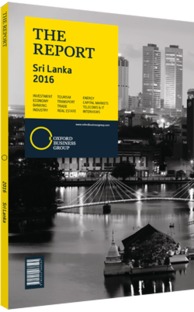The successes and challenges of building a healthy debt market in Sri Lanka
Sri Lanka sold two international bonds in 2015, transactions which coincided with the advent of the new government, and both issues were great successes. They generated significant demand, and pricing was seen as good. In addition, the issues provided confirmation that the international community has faith in the new administration. Indeed, despite having inherited troubled finances, the government seems to be managing the situation well enough to keep the country attractive to international capital.
Yield Curve
Since transitioning to market-oriented economics in the 1970s, Sri Lanka has focused on building a healthy government debt market in order to raise funds and create a yield curve for other debt. Prior to reforms, the country had no real yield curve, with the government simply placing debt with institutions. However, by 2004 paper of up to 20 years’ duration was available and, following reforms, fundraising was significant. According to the Central Bank of Sri Lanka (CBSL), by the early 2000s government debt as a percentage of GDP had increased to over 100%.
In recent years the country has been issuing bonds regularly into the international markets. In a 2007 transaction, for example, Sri Lanka sold $500m of five-year paper at 8.25%, with the issue three times oversubscribed. The lowest rate was achieved by the country in 2014, when it sold $500m at 5.125%.
Milestones
An important sale came in May 2015, when Sri Lanka issued a $650m 10-year bond, with pricing coming in at 6.125%. It was heavily oversubscribed and, according to reports in the local press, was sold at spreads to US Treasury bills tighter than those of the last 10-year bond. Simultaneously, the CBSL issued $329m of one-year and one-month Sri Lanka Development Bonds (SLDBs) and $9m of two-year and 11-month SLDBs. The issue was seen as a test of the new government, as it was the first issue to be sold following the surprise victory of Maithripala Sirisena in the presidential election in January the same year. It was also a crucial sale for the economy: Sri Lanka’s foreign exchange reserves have been dropping steadily since August 2014. By the end of August 2015 foreign reserves totalled under $6.5bn.
In October 2015 Sri Lanka came to market with a $1.5bn, 10-year issue. The sale was originally scheduled for $1bn but was upped after strong initial orders were received. Pricing also came in better than expected, at 6.85% as opposed to the indicative 7.0%, according to press reports. It was the country’s largest international debt sale to date. At the end of the third quarter in 2015 the country had a total of LKR727bn ($5.2bn) in international sovereign debt outstanding, according to data from the Ministry of Finance. That compared with LKR3.2trn ($23bn) of Treasury bonds sold domestically and LKR2.1trn ($15.1bn) of international project loans.
Bond Doubts
Despite the successes achieved, the country’s bonds have been negatively affected as a result of domestic difficulties and international pressures. The yield on its five-year Treasury bonds rose from 6.586% in September 2014 to 10.529% in February 2016, while the $1.5bn sovereign bond collapsed almost immediately after the sale, with the yield rising to 8.3% by the end of 2015.
International debt issues have long been a subject of much controversy in the country. The opposition party mounted a widespread publicity campaign against the 2007 sale, and in 2015 the $1.5bn sale was also brought into question, with the costs of the underwriting, and the yield compared with US Treasury bills – more than four percentage points – cited as reasons for objection.
However, Sri Lanka has become increasingly dependent on the international markets along with its changing position in the world: Sri Lanka and China are currently in tense negotiations over the cost of Chinese projects, while the Chinese economy is slowing and funds may be less plentiful than in the past.
You have reached the limit of premium articles you can view for free.
Choose from the options below to purchase print or digital editions of our Reports. You can also purchase a website subscription giving you unlimited access to all of our Reports online for 12 months.
If you have already purchased this Report or have a website subscription, please login to continue.

